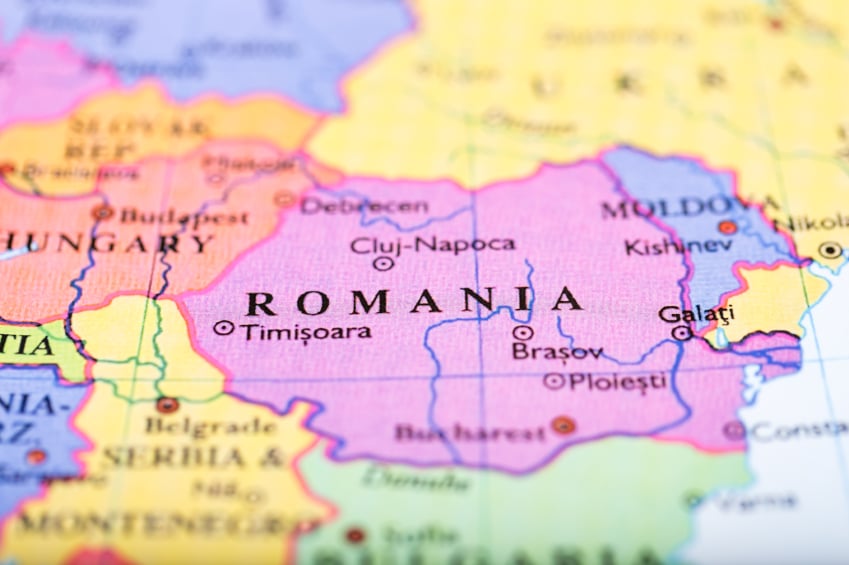
The 15 Easiest Languages to Learn for English Speakers
Looking for a language that’s not going to require three-hour evening classes Monday through Friday for the next 10 years?
Many languages are arguably easier to pick up than others for English speakers. So if you’re curious about the easiest languages to learn, I’ve got 15 great suggestions to help you out.
Contents
- 1. Dutch
- 2. Danish
- 3. Norwegian
- 4. Swedish
- 5. Finnish
- 6. Spanish
- 7. Portuguese
- 8. French
- 9. Italian
- 10. Romanian
- 11. Afrikaans
- 12. Swahili
- 13. Tagalog
- 14. Malay and Indonesian
- 15. Esperanto
Download: This blog post is available as a convenient and portable PDF that you can take anywhere. Click here to get a copy. (Download)
1. Dutch
Dutch is practically English’s first cousin. It’s the most closely related to English out of all the languages in this list.
Dutch is full of English cognates—drinken (to drink), kat (cat), week (week), licht (light) and hundreds more.
Once the fundamentals are down, you should be more than ready for basic conversations and children’s books.
2. Danish
Danish is mostly spoken in Denmark, although it’s also a protected minority language in Germany.
The grammar is similar to English, and many vocabulary words will sound familiar, like samme (same), ham (him) and op (up).
As a bonus, if you know Danish, you can read the next two languages—Norwegian and Swedish—pretty easily.
3. Norwegian
If you speak English, you’ll be very comfortable with the grammatical structure of Norwegian, so you can focus on learning vocabulary.
Look at this Norwegian sentence: Jeg spiste egg til frokost (I ate eggs for breakfast).
The Norwegian sentence can be translated word for word in the exact order as it would be said in English.
4. Swedish
Many Swedish native speakers can speak English quite fluently.
This is partly because Swedish and English are Germanic languages, so they have similar sentence structures and even some shared vocabulary.
Swedish has 10 million native speakers, mainly in Sweden but also in Finland.
5. Finnish
Finnish is a Uralic language that doesn’t share many similarities with English at first glance.
However, its clear pronunciation system, consistent grammar rules and lack of articles and gender make it easy for English speakers to master.
Finnish sentences follow the same word order as English (subject-verb-object), but they also have a flexible word order, allowing for some freedom of expression. You’ll also find many borrowed English loanwords, especially in tech, business and pop culture.
6. Spanish
Spanish is often the go-to language for English speakers because of its small inventory of speech sounds and user-friendly phonetic spelling system.
In Spanish, a always sounds more or less like a (even with an accent mark), which we as learners appreciate.
Thanks, Spanish.
7. Portuguese
Portuguese is a Romance language closely related to Spanish, making it another simple-to-learn language for English speakers.
In fact, if you already know some Spanish, you’ll be able to understand the gist of Portuguese in many cases (and vice versa).
Portuguese sentence structure, tenses and conjugation patterns are similar to English. Plus, many words will sound familiar to both English and Spanish speakers.
8. French
French is another Romance language that has had a significant influence on English vocabulary, which means you already know a lot more French words that you realize.
For example: cuisine, rendezvous, cliché, souvenir and even RSVP (Répondez s’il vous plaît — Please respond)? Yep, all French!
French may give learners some trouble with its uniquely nasal pronunciations, but you’ll be happy to hear that it, too, uses a similar sentence structure to English. So, when you learn French, you’re never starting from scratch!
9. Italian
It’s got a few more vowels than its cousin over in Spain, but Italian’s big advantage is that most of its consonants and vowels are among the most common sounds found in world languages.
That means most learners won’t find many words they can’t get their mouth around!
It’s also an easier language to learn for English speakers than, for example, Russian or Chinese, which take much longer to learn and reach fluency.
10. Romanian
People may not be aware that Romanian is one of the Latin languages because it’s not as popular as the other more commonly learned ones like Spanish and Italian.
Phonetically speaking, once you’ve learned how to pronounce the letters of the alphabet you’re pretty much set when pronouncing words.
Unlike English, there aren’t several pronunciations of a singular letter or letter combination. You say what you see.
11. Afrikaans
We mentioned Dutch above, but Afrikaans is like a grammatically boiled-down version of its parent language.
Whereas Dutch demands verb conjugations like those in English—for instance, I am, you are, it is—Afrikaans doesn’t bother you with the details.
In South Africa it’s ek is (I am), jy is (you are), sy is (she is). What could be easier?
12. Swahili
Spoken in East Africa, Swahili is a language with a clear and simple pronunciation system, with each letter representing a distinct sound.
The grammar is also very straightforward, featuring a flexible sentence order and very limited verb conjugation. (The language relies on prefixes in place of conjugation.) Plus, there are no gender or articles to learn.
All of these elements make Swahili a breath of fresh air for English speakers, since there’s fewer inconsistencies and irregularities to remember.
13. Tagalog
If you listen to Tagalog, the national language of the Philippines, it may sounds intimidating.
But once you take a closer look, you’ll find Tagalog to be a pretty friendly language for English speakers to learn, due to its straightfoward pronunciation (despite a few unique sounds like the glottal stop), no verb conjugation and simple grammar.
Tagalog is also a heavily contextual language. This means that you can express a lot (and be undestood by native speakers) with a smaller range of vocabulary and some well-placed gestures.
14. Malay and Indonesian
Malay (bahasa melayu) and Indonesian (bahasa indonesia) are similar languages that share a root language and language group but are still different, as they have their own vocabulary, pronunciation, spelling and more.
However, they’re both relatively easy to learn for English speakers.
Malay is spoken in Malaysia and Indonesian in Indonesia. What makes them easy is the grammar—there are no grammatical categories for gender, number or tense.
Since they share roots, they’re mutually intelligible to some extent—some sources say 60-70% in daily conversations.
However, this doesn’t mean learning one language will make you able to speak the other. Instead, think of it more as a head start if you decide to pick up the other one.
15. Esperanto
This language was invented by a few linguists who were also great global citizens.
Even though it’s an “artificial language,” its 2 million speakers, several hundred thousand Wikipedia articles and organizations worldwide would argue that it still counts.
Esperanto was designed with you in mind: Minimal grammar, easy rules and as a bonus, lots of things that resemble many other world languages.
With the languages on this list, you should be able to get started identifying your low-hanging linguistic fruits.
And with the right resources, you can learn these “easy” languages even faster.
For example, FluentU helps you learn languages by adding interactive subtitles to thousands of videos, allowing you to see the language used in context and click on words and grammar structures you don’t know.
No matter how busy you are or how difficult you think it may be, there’s a language out there for everyone!
Download: This blog post is available as a convenient and portable PDF that you can take anywhere. Click here to get a copy. (Download)

















